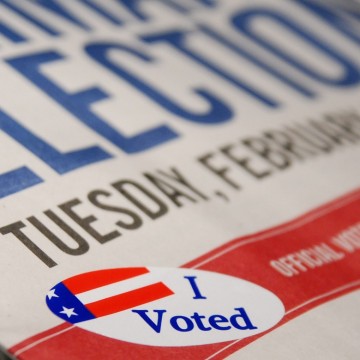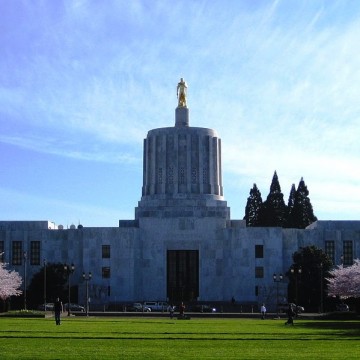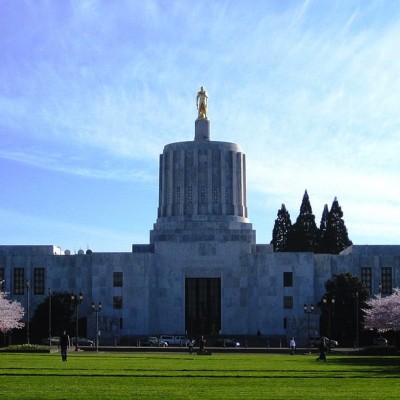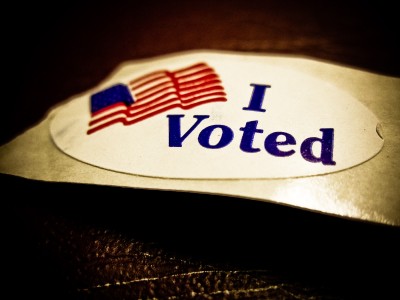5 Things to Watch for on Oregon’s Election Night
Tuesday, November 04, 2014

It’s been a mid-term election season of historic proportion. Scandals, huge ballot questions and lots of money have been plentiful this season. Control of the Oregon Senate is at play. And a large number of new voters have registered, many abandoning party affiliation.
How much will that factor into the actual election results, and what will those results portend for things to come? GoLocalPDX asked local activists and political experts what they thought could turn the tide.
“It’s all about voter turnout,” said Chris Shortell, Associate Professor of Political Science at Portland State University’s Hatfield School of Government.
Slide Show: 5 Things to Look for on Election Night
Political experts are predicting that Oregon voter turnout will be in the low seventy percentiles, dead even with the last two midterm elections in the state.
Big Races, Big Scandals, Small Turnout?
The big races for governor and U.S. Senate have both been rocked by scandal, which in general is not good for voter enthusiasm.
Governor John Kitzhaber’s campaign has been all but consumed by scandals revolving around his fiancée Cylvia Hayes. Stories about Hayes, propelled by the media, range from an alleged marijuana growing operation Hayes undertook in 1997 to questions raised about whether or not the consulting contracts she pursued while working in the Governor’s office could be considered lobbying.
Jeff Merkley’s U.S. Senate challenger Monica Wehby has been cowed by scandals as well, including a police report that characterized her as stalking a former boyfriend.
In both cases Democrats are projected to win. But the scandals may influence voter turnout in a way that could have an impact on candidates further down the ballot, like in the state senate race.
“I think in these cases the scandals will depress turnout among supporters while not increasing turnout among opponents,” said Shortell. “There’s probably enough of a margin for Kitzhaber to not impact him.”
But on other issues lower turnout can be a factor in the decisions, especially in tight ballot questions.That’s not a good thing for liberals, who tend to have lower voter turnout in the midterms to begin with. Democrats and unions often have a powerful ground game that can get voters out in major races.
“That helps them if it’s a presidential year,” said Scott Bruun, a former politician and a GoLocalPDX contributor. “But in a midterm, the turnout is in the Republicans’ favor.”
Kyle MacLowry with Portland Fire Fighters Association said his union usually does a lot of get out the vote work in presidential elections years, but this year his group has only done one event.
“It’s hard for us to get our members to do phone banking [in a midterm],” said MacLowry. “It’s not one of our strengths.”
That could have a big impact for initiatives like Measure 91 that would legalize recreational marijuana. An Elway Research poll commissioned by The Oregonian estimated that 44 percent of voters would vote to legalize pot, 46 percent wouldn’t and 7 percent are undecided.
On the Fence Voters
Undecided voters will also be a factor in some major races, like Oregon’s Top Two Primary. Measure 90 would do away with partisan primaries and run all candidates at once and then move the top two vote-getters, regardless of party, into a final runoff election.
The Elway Research poll showed 36 percent of voters for it, 38 percent of voters against it, and a whopping 26 percent were still undecided.
“That’s a lot of undecided,” said Shortell. “If that was a candidate it would be really high. Undecideds tend to be high when it’s a complex issue. Also, when there isn’t a perceived partisan advantage it’s harder for a voter to make decisions.”
The Oregon Senate
The stakes are high in the Oregon Senate, where disaffected voters would have the biggest impact in tight races in small districts.

It all comes down to about five closely-contested state senate races. Bruun, believes Senate President Peter Courtney will hold onto this seat in Salem, despite a worthy run from his opponent Republican Patti Milne. “She might be one of the strongest GOP candidates anywhere in the state,” said Bruun. “But she’s running in a Democratic district where everyone knows [Courtney.]”
However, two area races could shift the balance in the senate: one in Clackamas County, where Republican Alan Olsen is fending off Democrat challenger Jamie Damon and one in Hillsboro, where Republican Bruce Starr is facing down Democrat challenger Chuck Riley.
It’s unlikely that the Democrats would get that coveted supermajority, given the low party turnout most are expecting. But any shift to the right in the senate will make it harder for Democrats to push through an agenda.
“Midterms rarely go well for the party in the White House,” said Shortell. “That’s likely to affect Democrats in Oregon.”
But with 50 percent of all ballots coming in on Monday and Tuesday, according to Tim Hibbits of DHM Research, nothing is set in stone.
Related Slideshow: Slideshow: 5 Things to Watch For in Oregon’s Midterm Election
Related Articles
- Oregon Election Season Was One For the History Books, Experts Say
- Oregon Voters Rejecting Political Parties
- Oregon is the 10th Most Politically Engaged State in the U.S.














 Delivered Free Every
Delivered Free Every
Follow us on Pinterest Google + Facebook Twitter See It Read It